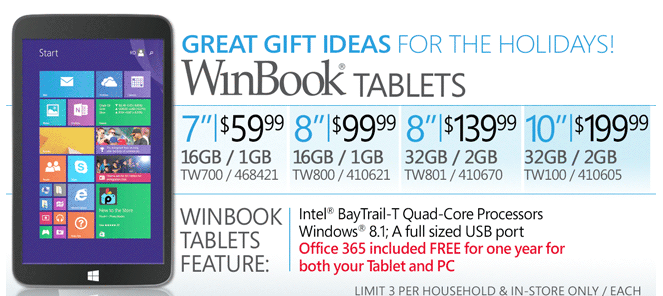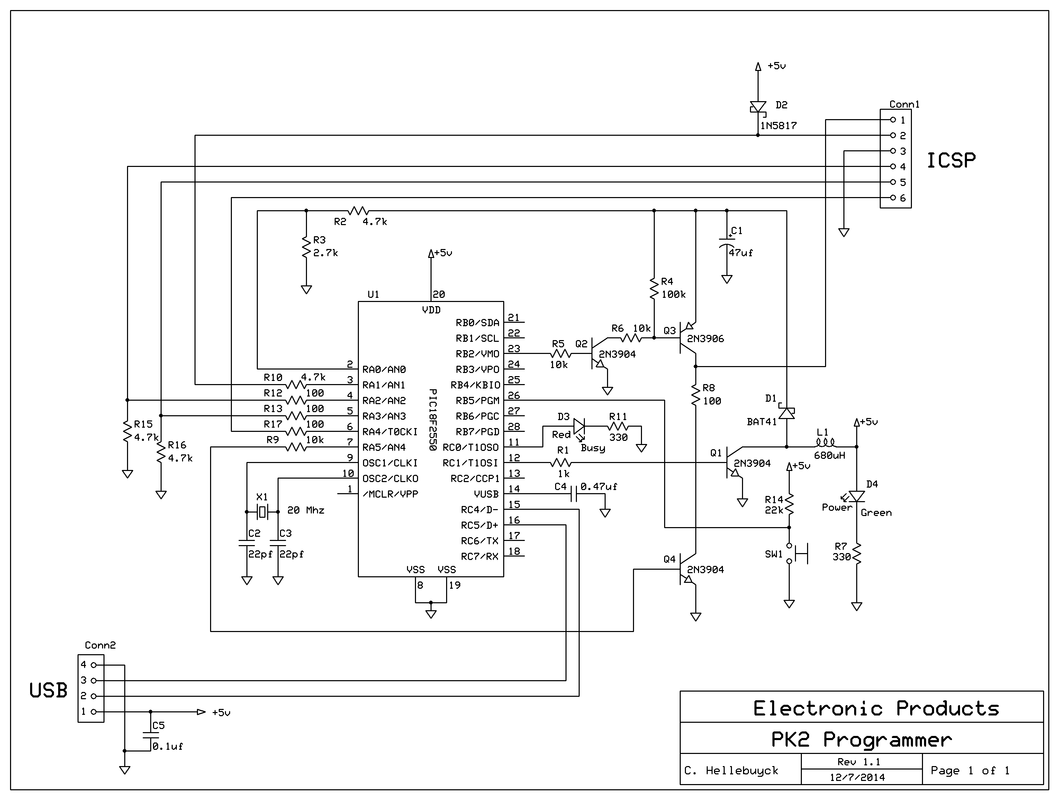|
I've always wanted a low cost way to program PICs and a tablet seemed like a great solution. But most tablets either didn't have a USB port for the programmer or ran an operating system that didn't support the software tools I like to use such as Great Cow Basic and PICkit 2 software. Then I found the Winbook tablets at Microcenter. They offer a very low cost tablet that runs a full version of Windows 8.1 and has as full size USB port. On the smaller ones they are a USB 2.0 and on the larger versions they offer USB 3.0. The pre-Christmas deals offered the smallest 7" Winbook for $59.95. It included Windows 8.1, 16GB of Flash Storage and 1GB of RAM. It also has wireless-N and a micro-HDMI port. So I bought one and downloaded the Great Cow Basic IDE at my Greatcowbasic.com site. I then ran the software without issue. The next step was to test the PICkit 2 on the USB port. This worked smoothly as the GCB IDE has the PICkit 2 command line interface built in. The programmer launched and programmed a PIC16F886 on a CHIPINO module without issue. I did find that 8GB of the 16GB was taken up by the operating system and other features so the memory size is limited, but plenty for what I was doing, at least I thought so. Then I decided to see if the Davinci 3D printer software, XYZware, would run on it. I downloaded that and it ran fine. I could load a 3D print into my Davinci without issues and the print was launched. My next step was to try and install the ExpressPCB software I like to use for creating circuit boards. Before I did that, I decided I needed a keyboard and mouse first. I tried a bluetooth keyboard but I couldn't it them to connect so I used a USB expander and was able to connect the PICkit 2, USB Keyboard and USB mouse to the tablet and everything worked great. I also wanted to to see if I could load Chrome on the tablet so I could modify Tinkercad designs but I found the memory usage was already getting low. Seems that Windows did an update and used up a bunch of space. I have to figure out what I can do to get some of that back but my idea of installing ExpressPCB may not be possible either. I guess 16GB isn't enough space. The 32GB is $139.95 but as the price gets higher I may just stick with a low cost laptop. The tablet has a microSD card slot so I'm going to try and load the programs on there and see if I can run everything from the SD card. So I've achieved one goal of programming PICs with a tablet but to create designs, write the software, send the 3D print file for a complete design from a tablet will require more memory with the SD card if that works or spend more money on a larger tablet which is not what I want to do. But at least I know its possible at the simplest of all levels. I can write a Great Cow Basic program and program a CHIPINO module with the code. Not bad at all for $59.95.
1 Comment
A reader of this blog, Frans Stevens, pointed out that the schematic for my Build Your Own PICkit 2 schematic had an error. The USB connections to D+ and D- were backward. I quickly looked over the schematic and also the PCB layout because I've built many of these and they all worked. But I found out he was right, the schematic was wrong. Luckily the PCB was correct and that is why all my PK2 programmers work fine. Pin 2 of the USB needs to connect to D- and pin 3 needs to connect to D+. I had them backwards in the schematic. So I immediately updated the schematic and uploaded to the Build Your Own PICkit 2 page. Its awesome to have such supportive readers with the willingness to share any errors they find. I want my information to be accurate but I'm human and do make mistakes. Thanks Frans. |
Categories
All
Visit previous blog posts in the archives below.
Archives
February 2018
About ChuckChuck has been programming with PIC Microcontrollers since there were only five devices. Now there are over 700 and growing. He also has a lot of fun 3D printing designs using his Davinci 3D printer and TinkerCad software. In this series of blog posts and occasional videos on his YouTube Channel he tries to help you get started with electronics and 3D printing. Disclaimer |
- Books
- Chuck's Blog
- YouTube Channel
- About Chuck
- 3D Printing
- Getting Started with PICs
- Build Your Own PICKit 2
- CHIPINO
- CHIPAXE Breadboard Modules
- Understanding Hex Files
- chipKIT
- Newsletter Archive
- Contact
- Retired Designs
- Downloads
- Kickstarter Projects
- Great Cow Basic Site
- Buy Hardware
- Links I Recommend



 RSS Feed
RSS Feed
